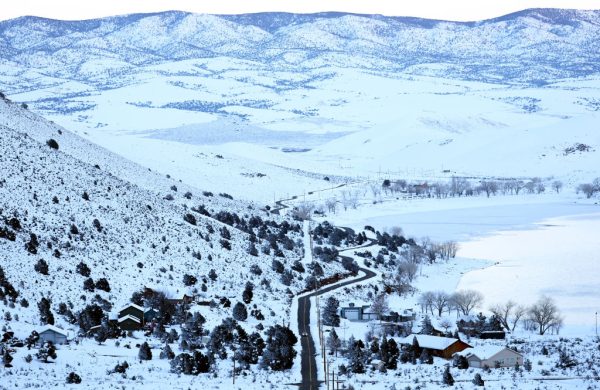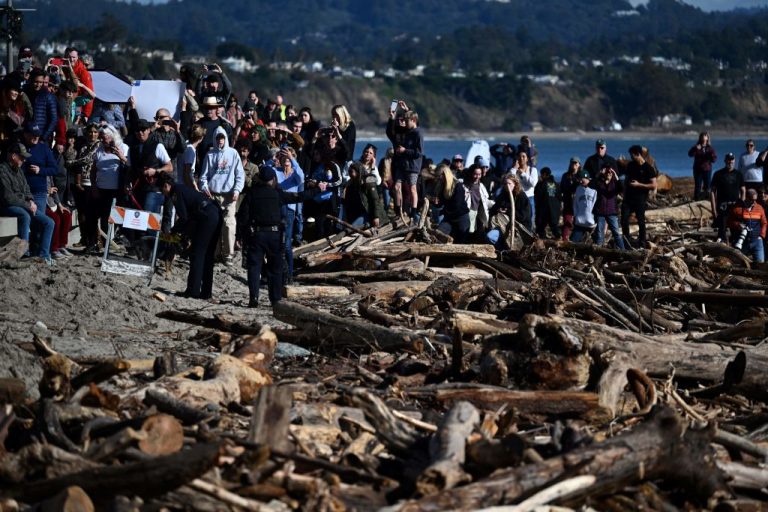Early in January, California was hit with winter storms that caused devastating flooding in many parts of the state. At least 14 people were killed and thousands were forced to flee their homes. At one point approximately 90 percent of Californians — some 34 million people — were living in flood watch zones.
One would think the upside to the devastation would be drought relief, as the state has been grappling with severe drought for some time. However, due to regulatory restrictions and inadequate infrastructure, among other things, the deluge of water has done little to address drought conditions in the state.
For example, despite seven atmospheric rivers hitting the state and dumping upwards of 30 inches of rain over some areas, one of the largest reservoirs in California remains well below the historic average. According to state data, the Shasta reservoir is still at 56 percent capacity, well below the historical average of 87 percent.
Substandard infrastructure and regulatory hurdles
California’s water infrastructure, made up primarily of a large network of cement canals, does not have the capacity to capture excess rainwater. They were designed to distribute water as quickly as possible in a straight line, not to capture rainwater. Most rainwater that falls in the state ends up in the Pacific Ocean.
California Governor, Gavin Newsom, has earmarked upwards of $8.6 billion for drought and flood management next year, and billions more was made available by the Biden administration in 2021, however until this money is converted into actual projects, relief will remain elusive.
Success
You are now signed up for our newsletter
Success
Check your email to complete sign up
Compounding the problem are regulations that restrict the amount of water that can be stored in reservoirs and wastes much of the rainfall the state receives.
Chris Chappell, host of popular YouTube channel America Uncovered, noted that “the Sacramento-San Joaquin Delta is one of the worst examples of water gone to waste.”
During one of the storms that hit the state, 95 percent of the incoming Delta water ended up in the Pacific Ocean not just because too much water was coming all at once but also because of California water management regulations that limit the amount of water that can be stored in reservoirs; meaning, state regulations limit the amount of water in reservoirs during a drought.
One reason California does this is for flood management in case of future storms, while other regulations, intended to protect endangered animals and ecosystems from warmer and saltier water under normal conditions, are to blame as well.
According to an article by the Los Angeles Times headlined “Environmental rules stoke anger as California lets precious stormwater wash out to sea,” state and federal water managers say “they have been complying with environmental regulations … including a … ‘first flush’ protocol that mandates two weeks of reduced pumping at the onset of the first big winter storms,” in order to protect aquatic wildlife.
The Public Policy Institute of California says that “these latest restrictions are limiting the amount of water exported from the Delta: roughly 84,000 acre-feet less will be exported over 14 days.”
That amount is enough to supply 150,000 homes for an entire year, Chappell noted, adding that “those regulations are also part of why some reservoirs south of the Delta remain low despite the storms.”
READ MORE:
- US Government Warns Drought-Stricken California to Prepare for Continued Dry Conditions
- This Year’s Droughts Are Crushing the US Cotton Industry
- No End in Sight as Massive Drought Persists in Much of the Western US
Long history of wastage
The state has a long history of wasting water that could otherwise be used to support the region’s extensive agricultural and domestic water consumption.
According to a Jan. 17 article, published by Vox, “Many reservoirs operate according to guidelines from the US Army Corps of Engineers that specify how much water they can hold at a given time of the season. That means some reservoirs preemptively let out water to leave room for runoff from storms that never arrived.”
While some efforts are currently underway to make reservoirs more efficient, Californians from across the political spectrum are angry that bureaucracy prevents existing infrastructure from storing more water.
Californian Senator Melissa Hurtado tweeted early in January, “Today, I wrote to Governor Newsom joined by Assmeblymember Jasmeet Gains urging him to relax Delta pumping restrictions and increase exports south of the Delta. After several years of drought, it only makes sense to send excess water where it is needed most. #SD16.”
This strategy is becoming more and more attractive as snowpacks from the Sierra Nevada Mountains, a major source of water for the state, become less available.
Little improvement despite billions invested
According to Bloomberg, outdated water systems built between the 1930s and 1970s “makes it difficult in the current era to capture, store and convey water California needs to remain the dominant US agricultural and economic power.”
In an attempt to address the issue, California voters approved $7.5 billion in bonds in order to “restore watersheds, improve water quality and water infrastructure, including $2.7 billion in funding for water storage projects.”
Between 1996 and 2018, California has attempted to address its water scarcity problem with state bond purchases with no less than eight propositions, promising to invest a total of approximately $27.7 billion over that period with little improvement.
In 2014, for example, California’s Proposition 1, authorized over $7 billion in bonds “to restore watersheds and improve water quality and water infrastructure” which also included $2.7 billion in funding for water storage projects, yet construction has yet to begin despite the passage of nearly a decade.
“Construction has yet to begin on any of the seven projects approved by the California Water Commission, and the new storage structures are scheduled to come online between 2025 and sometime after 2030,” Bloomberg reported, adding that, today’s California water projects “require decades to bring online, with years spent on environmental, regulatory and planning reviews.”
Red tape and bureaucracy appear to be the primary culprits preventing these projects from coming to fruition. Projects are being held up by years due to environmental regulations, feasibility studies and public benefits projects.
One program, the Los Vaqueros Reservoir Expansion Project, began the process in late 2020. However, it is not expected to break ground until at least the middle of this year and will be operational sometime in early 2029, assuming everything goes as planned.
Another endeavor, the Pacheco Reservoir Expansion Project, entered the feasibility study phase in late 2021, but it is not expected construction to begin until the first half of 2025 with operations beginning in early 2030; that’s if the project proceeds without delays, something that rarely occurs.

Ineffective funding models
Also standing in the way of these projects are several conditions that need to be met in order for the promised funds to be released.
Proposition 1 for example, which was tabled in 2014, had several conditions on funding, including requirements that the storage project shows “public benefit” and had a complex system in place to rank the quality of the project. It took three years just to gather applications.
According to the San Francisco Chronicle, “The proposition … is funding just a fraction of each project, meaning even after the cash is doled out, proposals will move forward only when additional money is secured.”
Funding schemes like these have resulted in billions in resources sitting idle for years that could be exploited to address the water crisis.
Governor Newsom has admitted that it’s taking too much time for water storage projects to come online and that the “process is leading to paralysis.” The circumstances have prompted him to appoint “strike teams” in an effort “to resolve bottlenecks among local, state and regulatory agencies,” Bloomberg reported.
Some relief may be in sight. It’s estimated that the snow-pack on the Sierra Nevada mountain range, a major source of water for California, is nearly 250 percent above average as of Jan. 21. However, should this water not find its way into the state’s water storage facilities once it melts, much of it may end up in the Pacific Ocean.
















